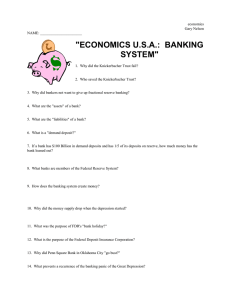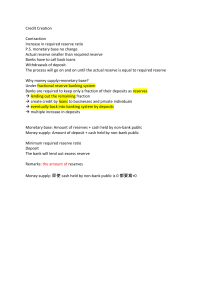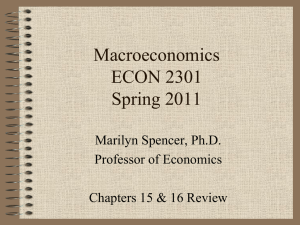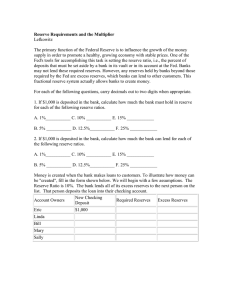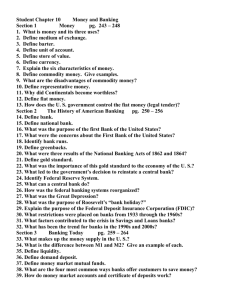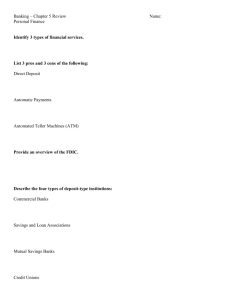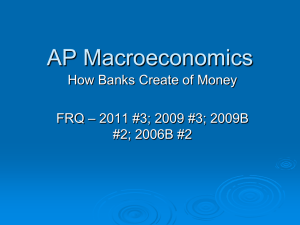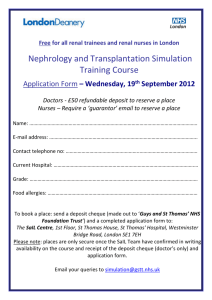Economics Review Questions: Money & Banking
advertisement
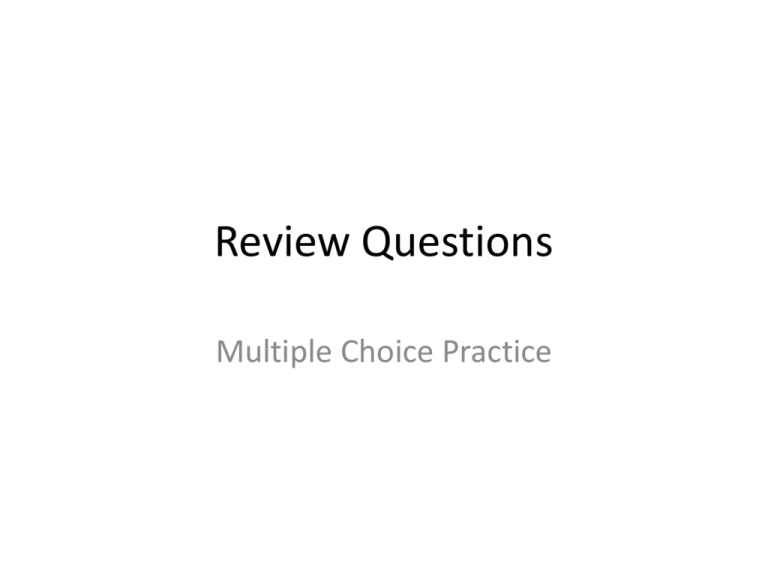
Review Questions Multiple Choice Practice The transaction demand for money is very closely associated with money’s use as a (A) store of value (B) standard unit of account (C) measure of value (D) medium of exchange (E) standard of deferred payment D The amount of money that the public wants to hold in the form of cash will (A) be unaffected by any change in interest rates or the price level (B) increase if interest rates increase (C) decrease if interest rates increase (D) increase if the price level decreases (E) decrease if the price level remains constant C Which of the following will lead to a decrease in a nation’s money supply? (A) A decrease in income tax rates (B) A decrease in the discount rate (C) An open market purchase of government securities by the central bank (D) An increase in reserve requirements (E) An increase in government expenditures on goods and services D An increase in the government budget deficit is most likely to result in an increase in which of the following? (A) The marginal propensity to consume (B) Exports (C) The real interest rate (D) The money supply (E) The simple multiplier C A commercial bank’s ability to create money depends on which of the following? B (A) The existence of a central bank (B) A fractional reserve banking system (C) Gold or silver reserves backing up the currency (D) A large national debt (E) The existence of both checking accounts and savings accounts Assume that the required reserve ratio is 10 percent, banks keep no excess reserves, and borrowers deposit all loans made by banks. Suppose you have saved $100 in cash at home and decide to deposit it in your checking account. As a result of your deposit, the money supply can increase by a maximum of (A) $800 (B) $900 (C) $1,000 (D) $1,100 (E)$1,200 B In the narrowest definition of money, M1, savings accounts are excluded because they are (A) not a medium of exchange (B) not insured by federal deposit insurance (C) available from financial institutions other than banks (D) a store of purchasing power (E) interest-paying accounts A With a constant money supply, if the demand for money decreases, the equilibrium interest rate and quantity of money will change in which of the following ways? Interest Rate Quantity of Money (A) Increase Decrease (B) Increase Not change (C) Decrease Decrease (D) Decrease Increase (E) Decrease Not change E Which of the following is most likely to occur if the Federal Reserve engages in open market operations to reduce inflation? (A) A decrease in interest rates (B) A decrease in reserves in the banking system (C) A decrease in the government deficit (D) An increase in the money supply (E) An increase in exports B


